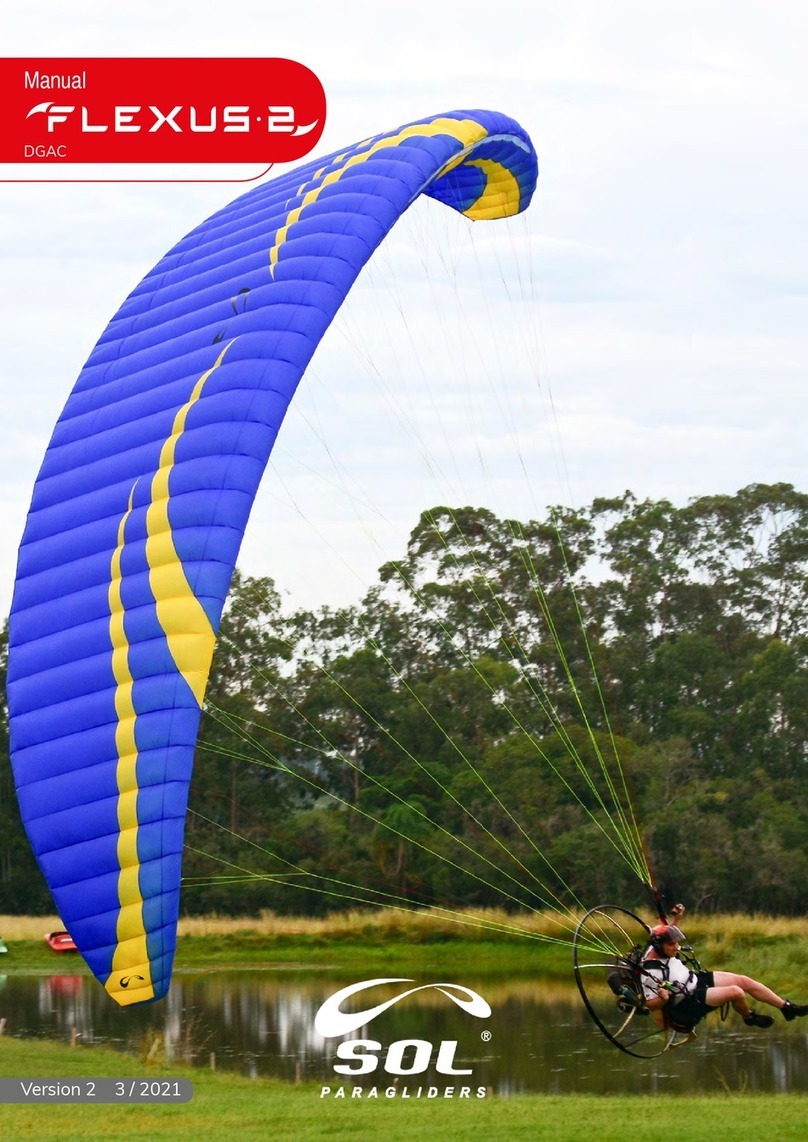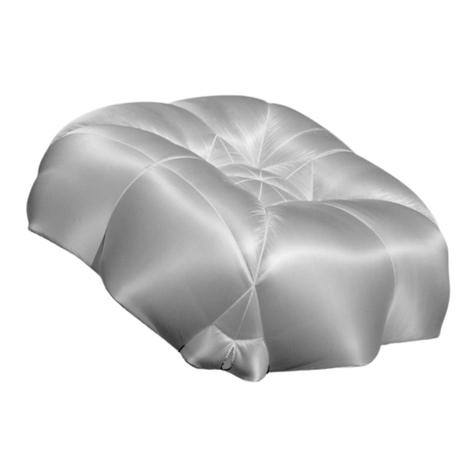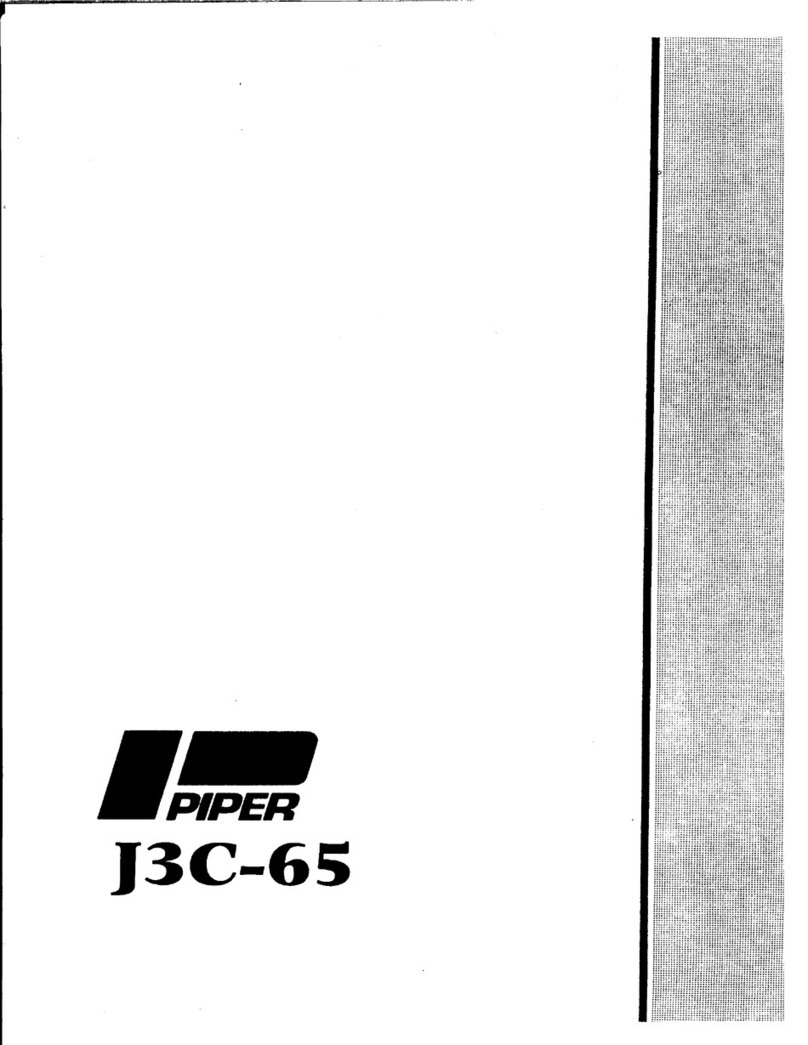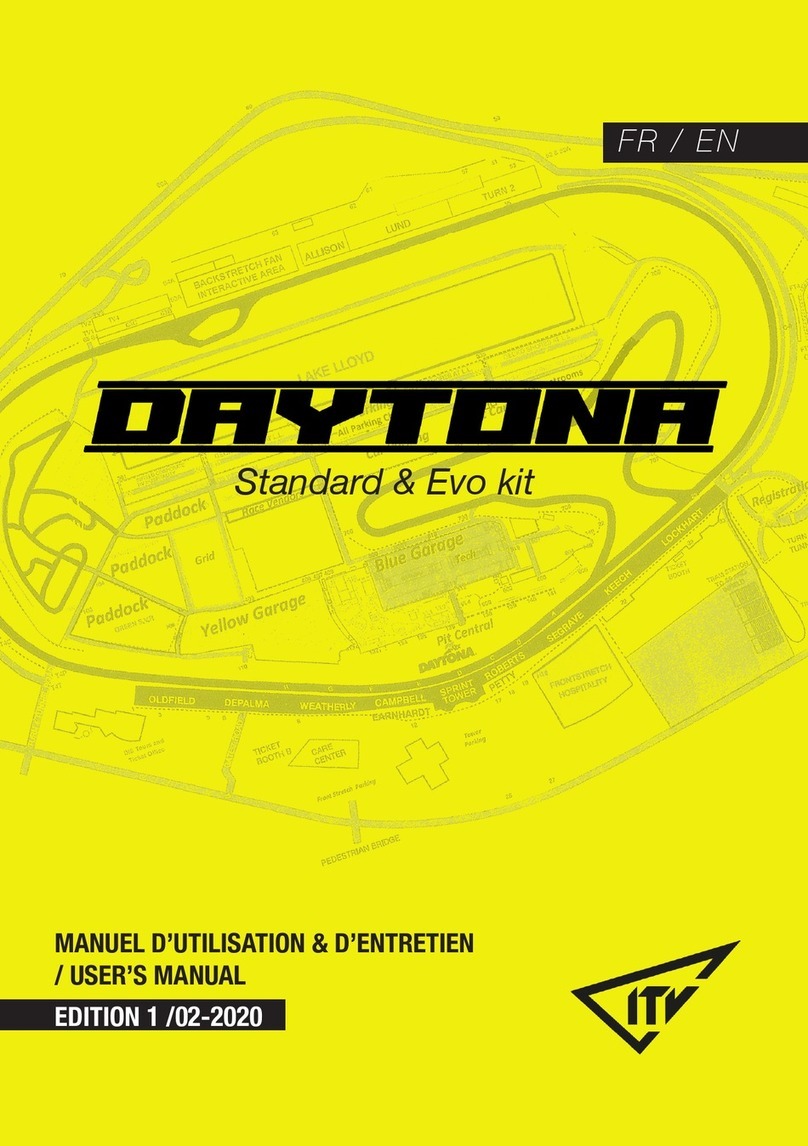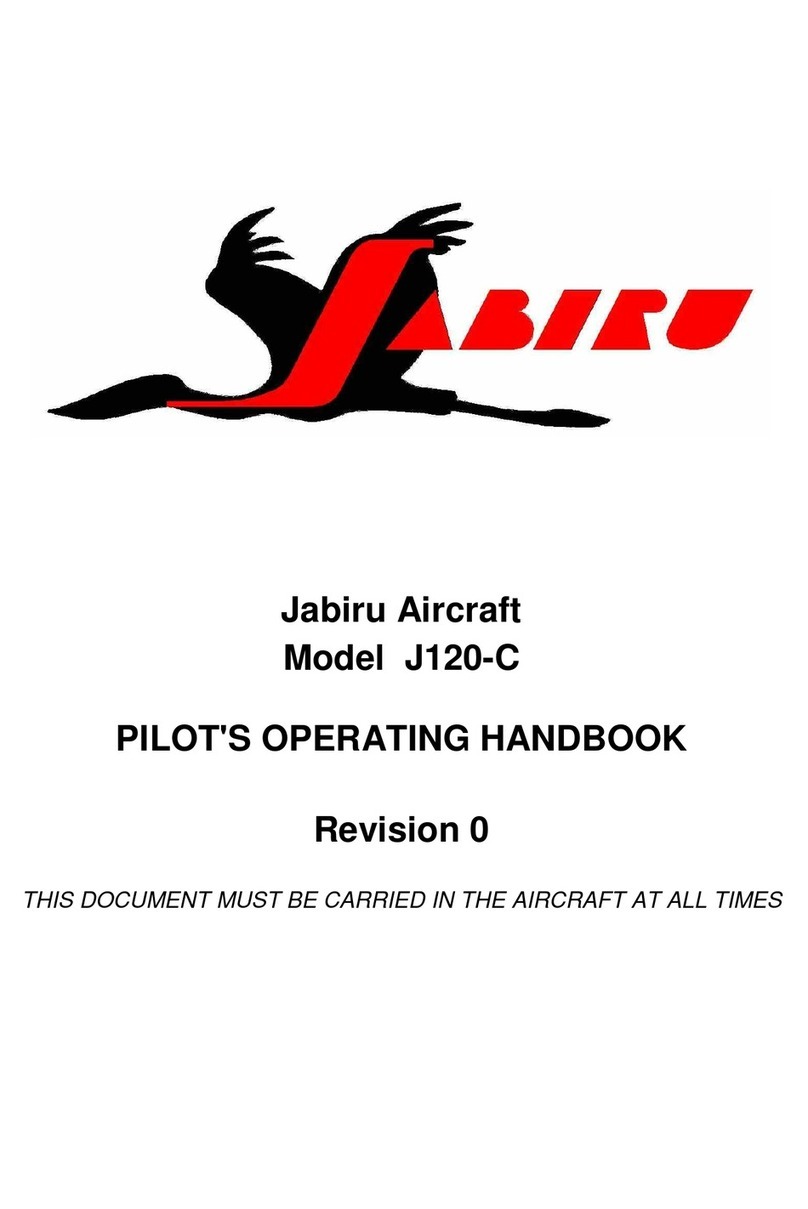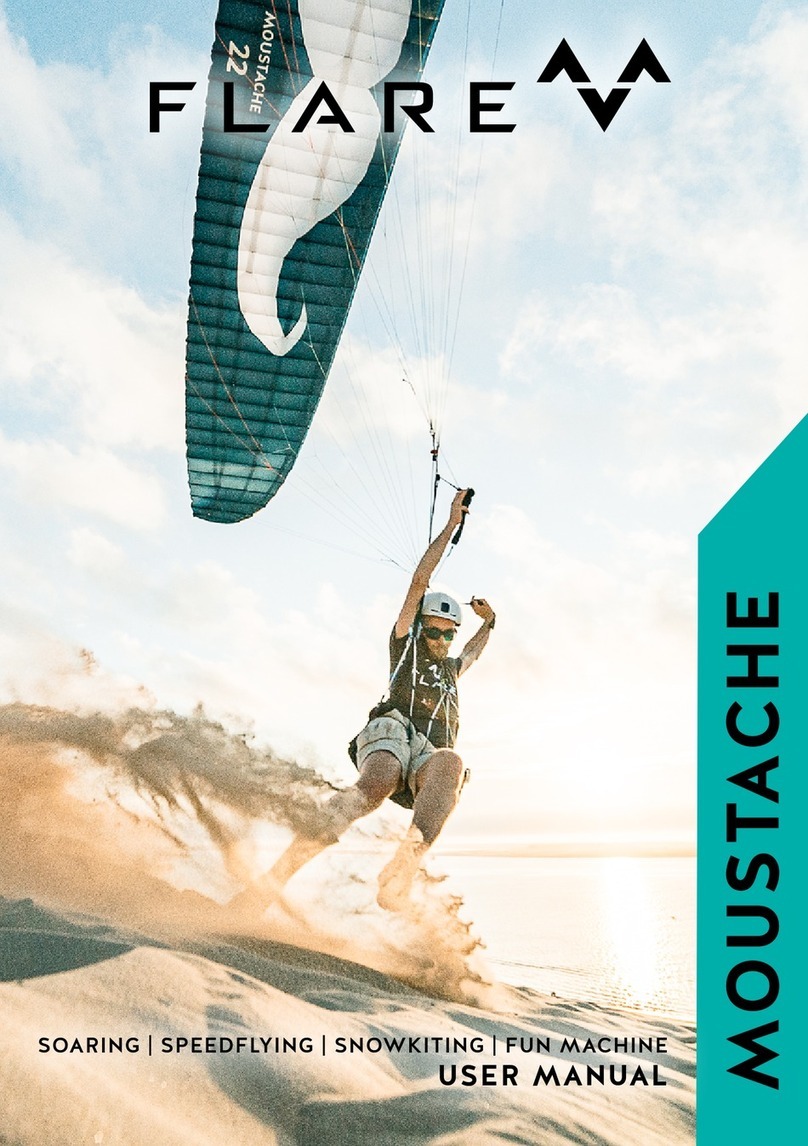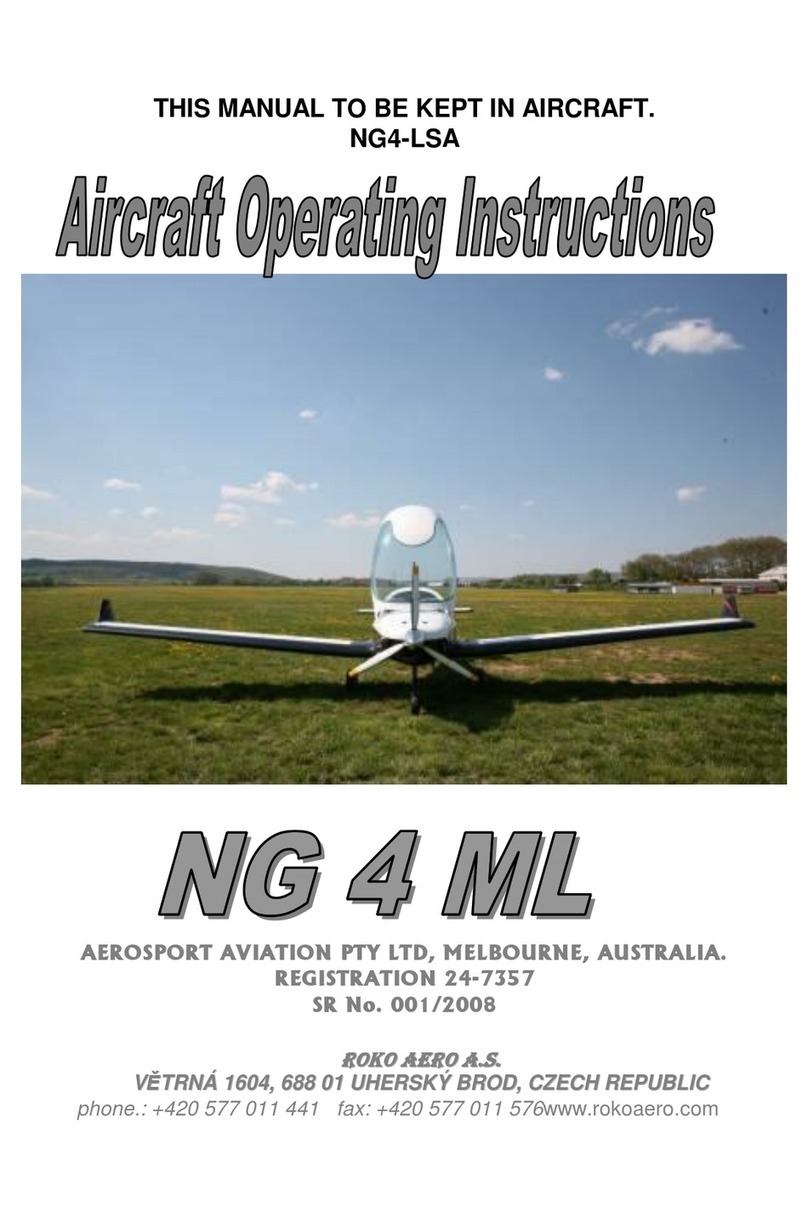Slingshot Machine User manual

USER MANUAL 2005

Machine
USER MANUAL
TABLE OF CONTENTS
Parts List........................................2
Inflation .........................................3
Machine Bar .................................4
Clip & Ride reboot.........................5
Machine setup...............................6
Launching......................................7
Relaunch........................................8-9
Safety.....................................................10-11
Performance.................................12-15
Tuning & Maintenance.................16-17
Warranty / Disclaimer...................18-20
CONTACT
assistance, please email us or visit our website:
http://www.sskiteboarding.com
Customer service:
Domestic: [email protected]
International: [email protected]
P 01

Machine
OVERVIEW
The Machine is Slingshot’s ultimate light wind kite. With
the addition of the Profire Oneline bar and Slingshot’s latest
innovations, the Machine allows you to control the performance, kite
shape, and broad range of power on-the-fly. The Machine features
three new innovations performing as one, for the most fun light wind
riding possible.
Oneline/Splitflex/Power Curve
With the use of Oneline, riders have all the benefits of the most
advanced safety system in addition to the latest performance
features that allow the rider to “sheet” and “trim” the Machine from
the bar. Having the ability to adjust the shape and angle of attack
of the kite on-the-fly results in added power for early planing, loftier
jumps, and unmatched upwind performance with higher cruising
speeds.
Tony Logosz’s, Splitflex automatically controls the trailing edge
P 02
PARTS
1. Machine kite with bag
2. Jenna J Double Pump
3. Machine bar with Oneline
4. Patch kit
If you require further
flaps for optimal balance, speed, and flight
by merging Splitstrut technology with light
weight flexible battens.
Power Curve allows the shape of the
leading edge to be altered using Oneline
trim control without sacrificing the structure
and aerodynamics of the kite. The LE
is radically tucked under the canopy;
Therfore reducing the aerodynamic profile
of the LE. This makes for a very efficient
kite with no need for complicated Y bridles
or cross member lines.

INFLATION
STEPS
1. Close the OUT valve and secure with Velcro straps.
2. Make sure valve clip for each strut is open.
3. Clip the pump leash to the leash loop on the leading edge (LE) of the kite.
4. Insert pump nozzle into IN valve and secure with a slight twist.
5. Inflate kite to 6-8 psi. In constant air temperatures above 85° F / 30° C, inflate
only to 6 psi. This is due to air expansion in higher temperatures.
6. Pull pump nozzle and secure valve with Velcro straps. There is no pinching
required.
7. Clip all valve clips to lock air for each strut. This will allow your struts to remain
inflated even if your LE loses air.
P 03
1 3 2 4
5 6 7

Machine
MACHINE BAR
PARTS LIST
P 04
(A) Quick Release Surefire
Bungee Leash
(B) Lock-n-Load
(C) Safety release knob
(D) Adjustable stopper ball
(E) Depower cleat
(F) Depower handle
(G) Bar floats
(H) No-Slip-Grip leader line
(I) Profire Performance bar
(J) Wave Grenade pin
(K) Trim cleat-Oneline
(L) Trim handle
(M) Oneline
(N) Removable Donkey Dick
(O) Wire gate beaner
(P) Line winders
(Q) Oh-Shits
(R) Double Barrel cleat holder

Machine
CLIP & RIDE REBOOT
STEPS
P 05
1. Pull out some slack in the Oneline.
2. Loosen screw on Bell Housing and slide up the rope to expose the swivel.
3. Take the swivel end with the bend in it and insert it up into the loop in your
chicken loop.
4. Insert pin as shown.
5. Pull Bell Housing back over the swivel and line up the screw knob with the
black mark on the chicken rope. Secure the Bell Housing by tightening the
screw.
6. Check to make sure the Oneline
slides freely. Done.
1 2 3 4
6 5

Machine
KITE SETUP
ATTACHING THE ONELINE BAR AND LINES TO KITE
1. Pump up your kite and lay out the bar and
lines upwind of the kite with leading edge facing
you.
2. Lay out the Oneline kite pigtail behind the kite
(laying away from your bar).
3. Walk out and separate your lines twice
to assure there are no crossed lines. First,
separate your outside steering lines from the
Oneline and the flying lines. Lay your steering
lines to the outside. Then walk out and separate
your flying lines from the Oneline. Lay out your
Oneline in the center and lay out your flying lines
in between the Oneline and the steering lines.
P 06
STEPS
4. Lay your kite on top of the lines with the leading edge facing the bar, 1 meter
from the end of the lines. Place sand on leading edge of kite to secure it.
5. Attach outside steering lines to the trailing edge pigtails using a larks head
knot.
6. Attach flying lines to leading edge pigtails using a lark’s head knot.
7. Attach your Oneline to the last knot at the end of the Oneline kite pigtail from
behind your kite, using a lark’s head knot.
8. Just before launching your kite, have a friend hold your kite in the launch
position at the side of the wind window and do a visual check to make sure the
Oneline is not twisted around your flying or steering lines.
1 2 3 4
7 6 5
STEPS
8

LAUNCHING
STEPS
1. Find a wide open area with unobstructed steady wind. Make sure there are no
rocks, trees, fences, cars, power lines or people downwind of you or in your wind
window.
2. Have your launching partner walk your kite to the edge of the wind window
and have them turn the kite on its side and hold the leading edge facing towards
the wind.
3. Once you have tension in your lines, do a safety check to make sure you are
attached to your Quick Release Surefire Bungee, and that your Oneline is flowing
freely through the center of your bar by pulling the Oneline trim and releasing it.
If the Oneline flows freely, you are ready to launch.
4. Signal to your launching partner that you’re ready to launch and as they let go
of your kite, pull the top half of your bar towards you to SLOWLY raise your kite
into the sky. Get in the water quickly and enjoy your session!
P 07
1 2
3 4

Machine
RELAUNCH
STEPS
1. When your kite crashes leading edge down, let the kite drift directly downwind
of you and make sure all lines have equal tension.
2. Pull your Oneline in using a hand over hand technique to bring the leading
edge towards you until your kite is lying on its back. You can secure this position
by cleating your Oneline in the Oneline trim cleat. Never wrap the Oneline
around your hand and pay special attention to keeping all body parts clear of
excess line.
P 08
3. Uncleat and release tension of the
Oneline and begin working your kite to
the side of the wind window by pulling
in one side of your bar. The amount of
Oneline you have already pulled in to get
the kite to flip over will slowly get pulled
back through the middle of the bar as the
kite gets closer to the edge of the wind
window.
1 2
3

RELAUNCH
4. Continue working your kite to the edge of the wind window by applying
pressure to the appropriate steering lines. Do a final check to make sure all lines
are clear of body parts and that there are no lines caught or tangled on your bar.
If at any time you don’t feel comfortable, simply cleat off your Oneline with at
least two feet pulled in to prevent your kite from launching. Disengage your
Oneline when you are ready to relaunch.
5. As your kite lifts out of the water, raise it slowly to the neutral position and
readjust your Oneline to your desired position.
4 5
P 09
STEPS

Machine
SAFETY
GETTING STARTED
Always begin your session by making sure your Oneline glides freely
through the center of the bar by pulling in the Oneline trim and releasing
it. The best time to do this is when someone is holding your kite in the
position where you are ready to launch and all five lines are taught. Pull in
the Oneline trim and release it. If it flows freely you are ready to launch.
P 10
ONELINE RELAUNCH SAFETY
INSTANT DEPOWER
Oneline technology features the safest
depower system in the market with
Instant Depower. There are two ways
to activate Instant Depower. Use your
bungee leash to connect yourself to the
bar and either unhook from the chicken
loop and let go of the bar or pull the
red safety handle connected to the Clip
& Ride. The Oneline is connected to
the leading edge which allows your
kite to flip into a position that depowers
your kite 100%. Let your kite fall to the
ground/water/snow, and then prepare
to relaunch or reboot your Clip & Ride if
the safety system was pulled.
After releasing the Clip & Ride:
If you pull the Clip & Ride safety
system, the Oneline will immediately
kill all power to the kite. To retrieve
the bar, use a hand over hand
technique to pull yourself to the bar.
Make sure the Oneline is cleated in
the Oneline trim cleat with three or
more feet of Oneline cleated off to
prevent unwanted relaunch. If you
pulled the Clip & Ride quick release
and the Oneline is cleated off, now
is the best time to reboot the Clip &
Ride system. You are now ready to
relaunch.

SAFETY
MACHINE RELAUNCH SAFETY
OVERPOWERED
P 11
After letting go of your bar:
In the event you let go of your bar, the
Oneline will immediately kill all power to
the kite. To retrieve the bar, use a hand
over hand technique to pull yourself
to the bar. Grab the chicken loop and
make sure the Oneline is cleated in the
Oneline trim cleat with three or more
feet of Oneline cleated off to prevent
unwanted relaunch. Now you can hook
back into the chicken loop and prepare
to relaunch. (See Oneline Relaunch
instructions on page15)
If you become overpowered and start to get pulled off your board edge, you can
grab the Oneline handle and pull until almost all of the power is spilled from the
kite. Now, reset your edge, cut upwind, lean back and slowly let the Oneline out
until you have regained control.
Warning- When using this technique, know the difference between getting pulled
off your edge and flying too big of a kite in high winds. If you are consistently
overpowered, use a smaller kite or end your session.

Machine
PERFORMANCE
Oneline terms
Depower Decreasing the overall power of the kite by locking off the chicken loop
rope
Sheeting (Throw) Adjusting the overall power of the kite by pushing the bar in or
out.
Trim Adjusting the tension of the Oneline by either pulling in and cleating the
Oneline (Trimmed in) or unlocking the Oneline to disengage tension (Trimmed
out).
Engaged Trim line or depower line pulled in and cleated.
Disengaged Trim line or depower line all the way out and uncleated
*Oneline performance may vary depending on kite size, riders weight and
skill level.
ONELINE MODES AND FUNCTIONS
* All modes begin with the bar in the middle to lower half of chicken loop
line with the rider hooked into chicken loop.
** Refer to the performance characteristics on page 15.
Stock Bar Mode (Flies similar to standard four line kite setup)
The Bar is in the middle to lower half of chicken loop line (even tension on all five
lines)
No trim (Oneline is disengaged). Depower line is all the way out (Depower is
disengaged)
Advantage: Performs like standard four line kite with increased safety, kite
stability and relaunch capabilities.
P 12
VARIABLES
MODES
Stock bar mode

PERFORMANCE
MODES
P 13
Mode 1
Mode 2-bar sheeted in
* All modes begin with the bar in the middle to lower half of chicken loop line
with the rider hooked into chicken loop.
** Refer to the performance characteristics on page 15.
Mode 1 - Oneline is trimmed in (Oneline engaged approximately 2-8 inches de-
pending on kite size and wind range). The depower line is all the way out (depower
disengaged). The bar is in the middle to lower half of chicken loop line.
Advantage: Additional low end power by opening canopy shape for increased
projected area. Kite flies further in the edge of the wind window, increasing upwind
performance.
Mode 2 - Oneline is trimmed in (Oneline engaged approximately 2-8 inches
depending on kite size and wind range). The depower line is all the way out (de-
power disengaged). The bar sheeted either all the way in or all the way out
Advantage: Bar sheeted in- More low end power than in mode 1 once up to
speed.Bar sheeted out- Better upwind performance than in mode 1 once up to
speed.

CONTINUED
MODES
Mode 3 - Oneline is trimmed in (Oneline engaged approximately 2-8 inches
depending on kite size and wind range). The depower line is pulled in (depower
engaged). The bar is sheeted either all the way in or all the way out.
Advantage: Similar performance to mode 2 with the benefit of depowering the
kite in higher wind conditions.
P 14
Mode 2-bar sheeted out
Mode 3-bar sheeted in
Mode 3-bar sheeted out

CONTINUED
Upwind Mode Once up to speed, bar is sheeted out, Oneline is trimmed in 2
inches, no depower.
Ultimate Speed Mode Bar is sheeted half way, Oneline is trimmed in 8 inches,
depowered half way.
Optimal Steering Mode Bar sheeted half way, no Oneline trim, no depower.
After trying each of the Oneline modes, we recommend adjusting the amount of
Oneline trim and depower for ideal performance to best suit your riding style in all
conditions.
PERFORMANCE OPTIONS
Stock Bar Mode Performs like standard four line kite with increased safety, kite
stability and relaunch capabilities.
Mode 1 Additional low end power by opening canopy shape for increased
projected area. Kite flies further in the edge of the wind window, increasing
upwind performance.
Mode 2 Bar sheeted in- More low end power than in mode 1 once up to speed.
Bar sheeted out- Better upwind performance than in mode 1 once up to speed.
Mode 3 Similar performance to mode 2 with the benefit of depowering the kite in
higher wind conditions.
Get Up And Go Mode Get up- Bar sheeted in, Oneline trimmed in 2 inches,
depower disengaged.
Go- Bar sheeted half way, Oneline trimmed in 4-8 inches, depower disengaged.
Boost Mode Bar sheeted halfway, depower disengaged, trimmed in 2
inches.
PERFORMANCE CHARACTERISTICS
P 15
IMPORTANT NOTE
Disengaging Trim
To disengage the Oneline from the trim cleat, pull the Oneline down and away
from the teeth of the cleat, and the Oneline will begin to disengage. The Oneline
slack will pull through the bar until the Oneline is no longer trimmed. If the
Oneline does not fully retract into bar, grab the Double Barrel and pull straight
down towards the center of the bar. This will retrack any remaining Oneline slack.

Machine
TUNING AND MAINTENANCE
P 16
If you have never kiteboarded using the Oneline and you have already checked
to make sure the Oneline is flowing freely through the center of the bar, try the
Oneline by getting into the water and letting go of your bar when no one is in your
wind window to safely activate the Instant Depower system. You will then realize
the benefits of instantly depowering your kite. Now, use your Oneline to assist
you in getting the kite into the relaunch position and you will see the advantages
of relaunching without having to swim towards your kite. (See Oneline relaunch
instructions on page 8) When you are up and riding your kite should fly just as it
would in a standard four line configuration if your Oneline is not trimmed in and
cleated. Once you feel comfortable, pull the Oneline in as instructed in Mode 1 in
the performance chapter. Don’t be afraid to pull in and cleat the Oneline! Try it and
you will feel the benefits and different performance characteristics. After you feel
comfortable in Mode 1, work your way through all the Modes to get the best feel of
what the Oneline has to offer.
BECOMING FAMILIAR WITH ONELINE
Optimum Oneline setup
Front and back lines should have equal tension. Oneline should also have equal
tension without altering the performance of the kite until the Oneline trim line is
pulled in. Oneline should have no twists around center lines.
Oneline setup instructions are written for stock Slingshot kites and bar setup with
original pigtails. If you take off the safety pigtails from the end of your flying lines,
Oneline length will need adjusting.
Oneline Maintenance
Over time, front lines, rear lines and Oneline will all stretch at a different rate.
Check line lengths occasionally for optimum Oneline setup. Oneline length and
tension can be adjusted by adding or subtracting pigtails to the Oneline kite
pigtail. Sand and salt may cause Oneline parts to clog and perhaps fail if not kept
clean. It is recommended that you wash your Oneline bar with fresh water after
every use. Always check for wear on all lines wear friction occurs.
ATL/Autopilot & Oneline
ATL/Autopilot and Oneline are compatible. ATL/Autopilot lengthens the overall
length of your kite’s attachment points. A leader line extension will need to be
added to the Oneline kite pigtail to compensate for the additional length of the
ATL/Autopilot bridle.
Pigtail attachment position
Stock setting attachment point is located on scuff guard. The benefit is awesome
upwindability.
Pump leash attachment. The benefit is awesome powered, wake style mode.
When using this pump leash attachment point you must remove some pigtails.
17.5-remove 1 of the loop pigtails
20.5-remove 2 of the loop pigtails
25.5-remove 3 of the loop pigtails
ONELINE TUNING AND MAINTENANCE

TUNING AND MAINTENANCE
BLADDER MAINTENANCE (REMOVAL)
DEFLATION
1. For complete kite deflation, unclip the valve clips and release the OUT valve.
2. To keep your struts inflated, leave the valve clips closed and release the OUT
valve.
1. First, pull off the strut hose by rolling back the tubing from the nipple of the bad
strut.
2. Tie a string, longer than the length of the bladder, to the valve.
3. Open the strut from the tailpipe end and slowly pull bladder out, making sure you
do not pull the string through the bladder on the other end.
4. Untie string from bad bladder and reattach to new bladder.
1. Pull new bladder through strut, to the string, at LE end of strut.
2. Reseat the bladder valve into opening by pulling valve through until flange
sits on top of the strut.
3. Reseal the tailpipe by folding and tucking bladder casing into the strut.
4. Seal tailpipe with Velcro closure.
5. To reseal the strut hose to the nipple, dip the hose in soapy water and slide
back onto the nipple. Let dry 10 minutes before use.
6. Inflate strut with 2 PSI making sure the bladder fills the strut. This may take a
little massaging. This is very important.
BLADDER MAINTENANCE (INSTALLATION)
PACKING
1. Start by folding one wingtip at a time.
2. Fold in wingtip and overlap 8 inches at a time.
3. Once you reach the first batten, fold 2 more times, then fold the leading edge over so
it is aligned with the end of the batten closest to the LE.
4. Continue folding until you reach the trailing edge leach batten, and then fold in the
excess trailing edge material so it is in line with end of the strut batten.
5. Continue folding until you reach the center of the kite.
6. Repeat steps 1-5 on other side of kite.
7. Stuff into bag trailing edge first.
Important- Once the Machine is folded, do not attempt to bend kite or batten in half.
P 11
P 17

1. Start by folding one wingtip at a time.
2. Fold in wingtip and overlap 8 inches at a time.
3. Once you reach the first batten, fold 2 more times, then fold the leading edge over so
it is aligned with the end of the batten closest to the LE.
4. Continue folding until you reach the trailing edge leach batten, and then fold in the
excess trailing edge material so it is in line with end of the strut batten.
5. Continue folding until you reach the center of the kite.
6. Repeat steps 1-5 on other side of kite.
7. Stuff into bag trailing edge first.
Important- Once the Machine is folded, do not attempt to bend kite or batten in half.
Machine
WARRANTY
GUIDELINES
General Warranty Policy applying to customers located within U.S.
If a product is found defective by Slingshot, in its sole discretion,
Slingshot’s only responsibility shall be limited to credit, repair or
replacement of the defective product. Slingshot will not be responsible for
any costs, losses or damages incurred as a result of loss or use of product.
This warranty is subject to the following limitations.
1.Slingshot warrants all products, with some exceptions, sold by Slingshot
to be free of defects in material or workmanship for a period of 90 days
from the date of purchase.
2.The warranty applies only to Slingshot products purchased from
Authorized Slingshot Dealers and is valid for the original purchaser only.
3.All products returned to Slingshot for warranty inspection must receive
a return authorization which can be given over the phone or via email from
our warranty department (tel: 509-493-3979 or warranty@sskiteboarding.
com)
4.The customer is responsible for the cost of shipping products freight
prepaid and insured. Slingshot assumes no responsibility for products
during shipment from the customer to our Warranty Department. Shipping
charges are not refundable.
5.Slingshot assumes responsibility for return shipping and insurance costs
to the customer.
6.All coverage under this warranty is void if any modification, change or
alteration has been made to the product that is not specifically authorized
in writing by Slingshot.
7.Repaired or replaced products are covered for the remainder of the
original warranty only.
8.All warranty claims must be accompanied by the original purchase
receipt from an Authorized Slingshot Dealer. Invoice or charge receipt must
clearly identify the dealer, date of purchase and the item
BEFORE YOU SUBMIT A WARRANTY CLAIM…be sure that you can answer
“yes” to all of these questions below.
STEP ONE
Evaluating the validity of the claim.
•Was the product purchased in the last 3 months?
•Does the damage appear to be attributable to defective materials or
workmanship?
P 18

WARRANTY
•Does the damage appear NOT to be due to impact, abuse, negligence, or
reactions to solvents, or harsh detergents?
•For specific instructions regarding different products, please consult the Product-
by-Product Guidelines.
STEP TWO
Bring the product to the store where it was purchased OR Call Slingshot for a
Return Authorization (RMA) Number OR email [email protected] to
obtain an RMA number. Please note that warranty claims will not be processed
without an RMA number.
•Consumers call 1-509-493-3979 or email [email protected]
•Tell us WHAT you are sending back-describe the product. Please include model,
product year and serial number.
•We will also require a digital photo of the product showing the issue.
•Tell us WHY you are sending it back-describe the problem.
•Tell us WHERE you bought the product.
•Record the RMA# and details for future reference.
STEP THREE
Pack and ship the product immediately!
•Include the original proof of purchase (receipt).
•Include a brief description of the problem and the RA#.
•Mark the defect clearly with a piece of masking tape.
•Print the RA# clearly on the outside of the box.
Slingshot Sports
Attention: Warranty RA#______________
65435 Hwy 14
White Salmon, WA 98672
If you live in anywhere outside the United States:
Please contact us via email and we will get you in touch with your regional
distributor to process your claim. [email protected]
Customers are responsible for shipping charges to Slingshot.
Slingshot is responsible for all charges shipping the product back to the customer
or dealer. Street addresses are required. We cannot return ship to a PO Box.
GUIDELINES
P 19
Table of contents
Other Slingshot Aircraft manuals

Slingshot
Slingshot PHANTASM KITE 633 User manual

Slingshot
Slingshot RPM 2015 User manual

Slingshot
Slingshot 2019 SST User manual
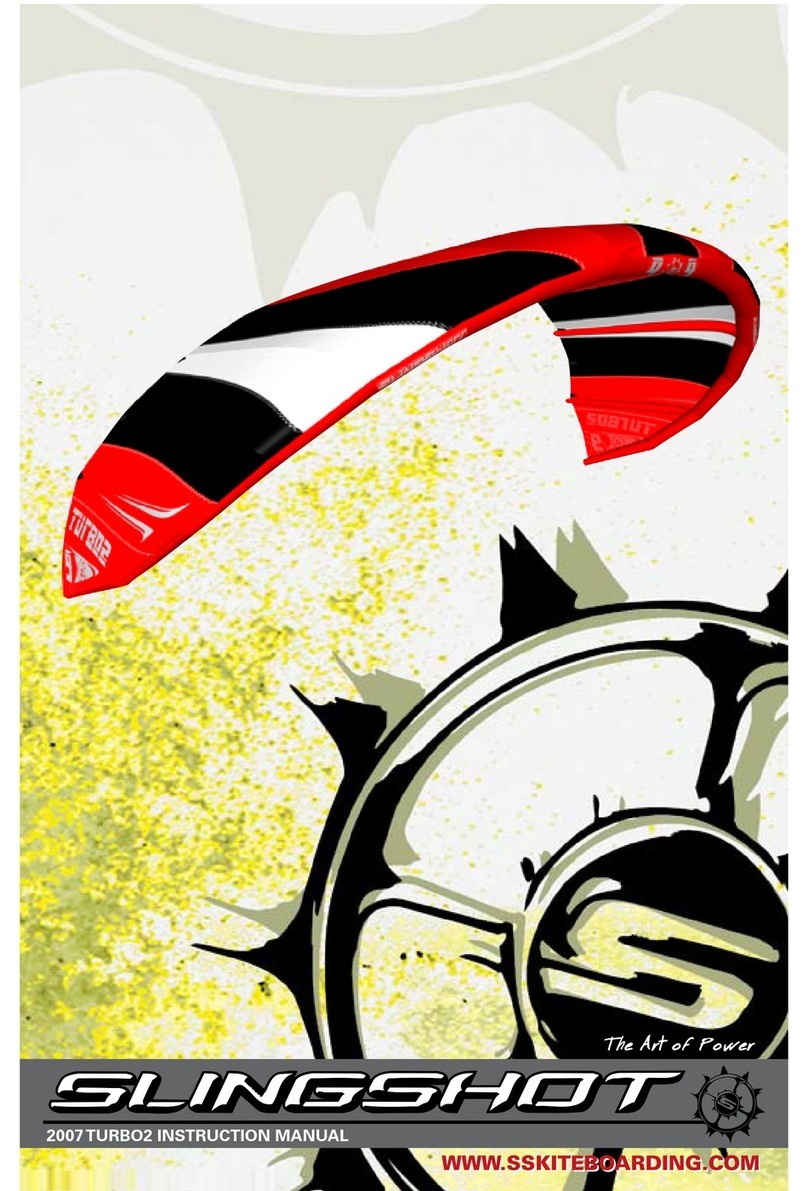
Slingshot
Slingshot TURBO 2 User manual

Slingshot
Slingshot Fkite Foil User manual
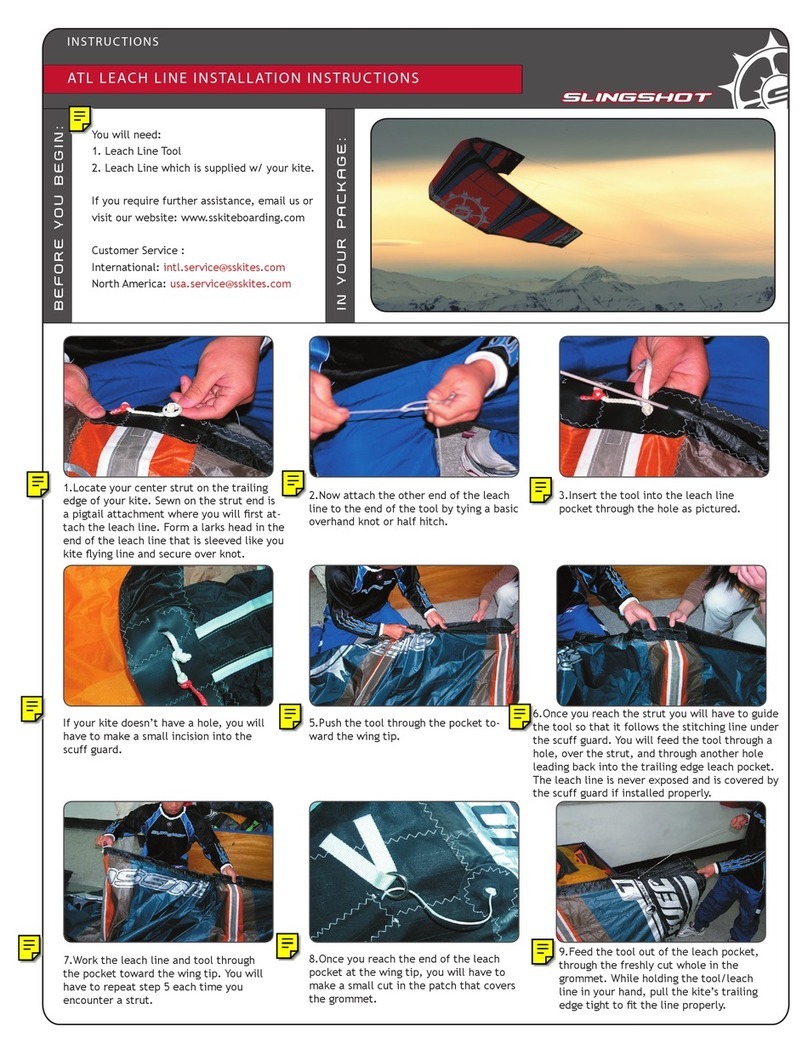
Slingshot
Slingshot ATL LEACH Series User manual

Slingshot
Slingshot Hover Glide Fwake Foil User manual
Popular Aircraft manuals by other brands

Wills Wing
Wills Wing RamAir 154 Owner's service manual

Strong Enterprises
Strong Enterprises Para-Cushion 305 Chair owner's manual
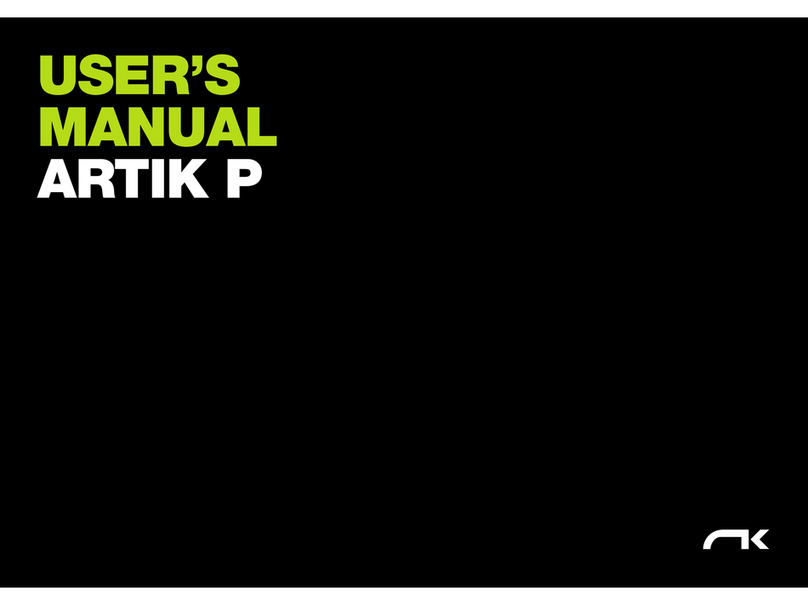
Niviuk
Niviuk ARTIK P user manual

Schweizer
Schweizer 2-33 operating instructions
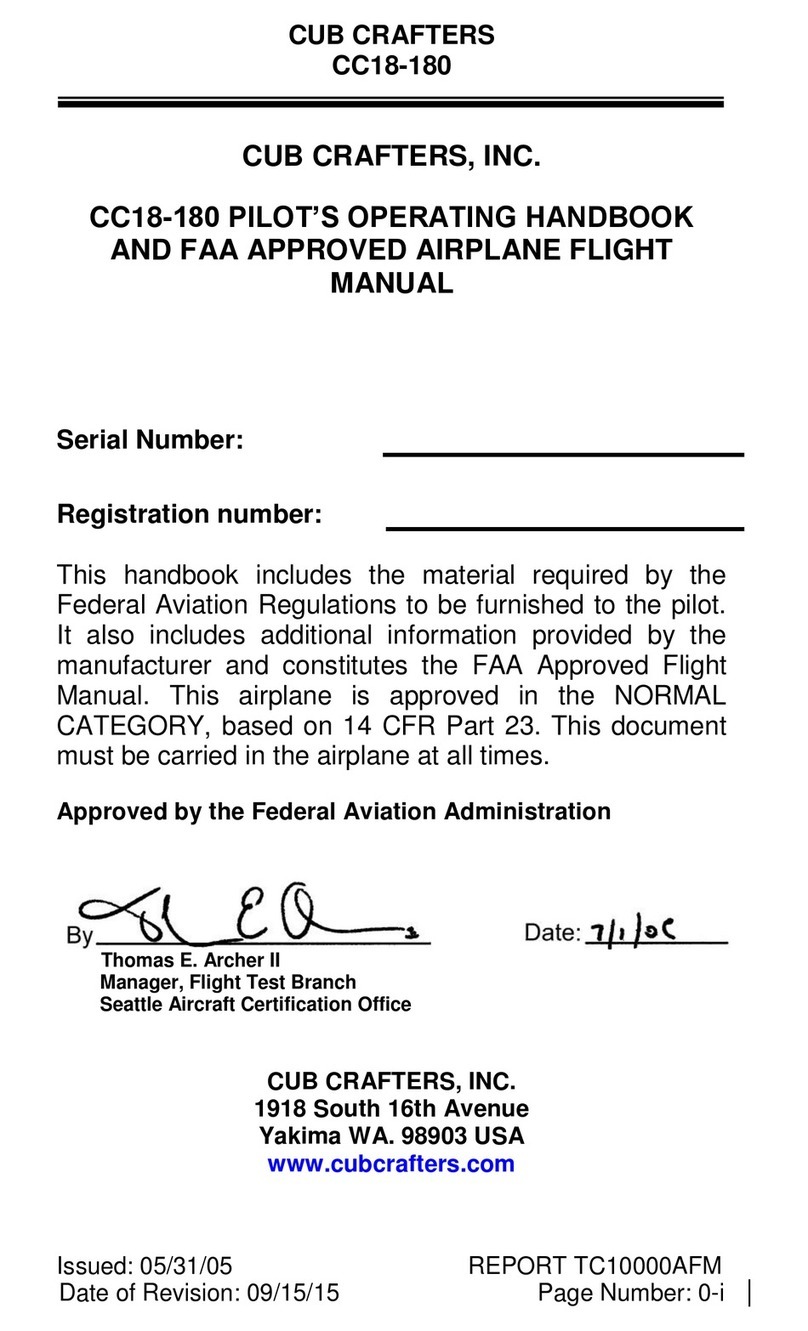
Cub Crafters
Cub Crafters CC18-180 Pilot operating handbook

Advance acoustic
Advance acoustic Bi Beta 4 user manual
